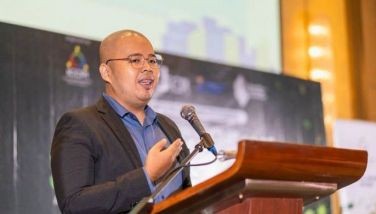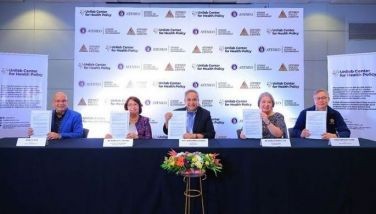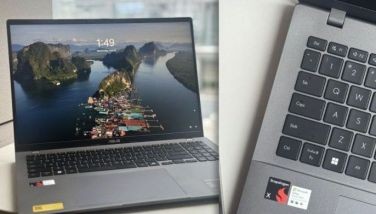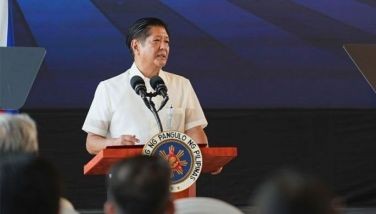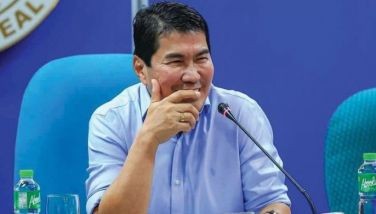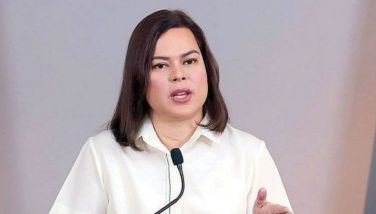Inflation slows to 6.4% in July
August 5, 2006 | 12:00am
Inflation slowed to 6.4 percent in July, its lowest level in two years, from 6.7 percent in June, the National Statistics Office reported yesterday, raising the prospect that interest rates will remain steady.
The slowdown was attributed mainly to easing food prices.
The July figure came in at the lower end of the Bangko Sentral ng Pilipinas (BSP) projected range of 6.3 to seven percent and was the lowest since June 2004 when it hit 5.4 percent, the NSO said.
For the first seven months of the year, inflation averaged seven percent from 7.1 percent in the same period last year.
"The lower inflation rate is consistent with the expected easing of price pressures. While this gives the BSP some room for maintaining the current monetary policy stance, there also continue to be upside risks to inflation which need to be closely monitored," BSP Governor Amando Tetangco Jr. said.
Despite optimism on the inflation rate deceleration for the remainder of the year, Tetangco said they expect the average inflation for 2006 to exceed the inflation target of four to five percent as a result of high oil prices.
"World oil prices are expected to remain above-trend in the near term, given geopolitical tensions in key oil-producing countries and the onset of the hurricane season in the Gulf of Mexico. This and other cost-push developments could increase the risk of second-round effects and adverse shifts in inflation expectations," he said.
Slowing inflation may convince the BSP to keep borrowing costs unchanged at 7.5 percent when they next meet on Aug. 10.
Deputy Governor Diwa Guinigundo forecast average inflation this year of below seven percent, compared with an official range of 7.3 percent to 7.6 percent. Price increases have averaged seven percent so far this year. Inflation should slow to "within target" by 2007, he said.
The BSP aims for price increases of between four percent to five percent next year.
Easing inflation should move the central bank to cut interest rates before the end of this year and "encourage a return to capital spending," George Worthington, chief Asia-Pacific economist at Thomson IFR in Sydney. "That is the most important thing for the economy."
The central bank last lifted its key interest rate in October, when it raised the level a quarter point as it matched similar increases in September and April last year. The rate was at a 13-year low before those increases.
The slowdown was attributed mainly to easing food prices.
The July figure came in at the lower end of the Bangko Sentral ng Pilipinas (BSP) projected range of 6.3 to seven percent and was the lowest since June 2004 when it hit 5.4 percent, the NSO said.
For the first seven months of the year, inflation averaged seven percent from 7.1 percent in the same period last year.
"The lower inflation rate is consistent with the expected easing of price pressures. While this gives the BSP some room for maintaining the current monetary policy stance, there also continue to be upside risks to inflation which need to be closely monitored," BSP Governor Amando Tetangco Jr. said.
Despite optimism on the inflation rate deceleration for the remainder of the year, Tetangco said they expect the average inflation for 2006 to exceed the inflation target of four to five percent as a result of high oil prices.
"World oil prices are expected to remain above-trend in the near term, given geopolitical tensions in key oil-producing countries and the onset of the hurricane season in the Gulf of Mexico. This and other cost-push developments could increase the risk of second-round effects and adverse shifts in inflation expectations," he said.
Slowing inflation may convince the BSP to keep borrowing costs unchanged at 7.5 percent when they next meet on Aug. 10.
Deputy Governor Diwa Guinigundo forecast average inflation this year of below seven percent, compared with an official range of 7.3 percent to 7.6 percent. Price increases have averaged seven percent so far this year. Inflation should slow to "within target" by 2007, he said.
The BSP aims for price increases of between four percent to five percent next year.
Easing inflation should move the central bank to cut interest rates before the end of this year and "encourage a return to capital spending," George Worthington, chief Asia-Pacific economist at Thomson IFR in Sydney. "That is the most important thing for the economy."
The central bank last lifted its key interest rate in October, when it raised the level a quarter point as it matched similar increases in September and April last year. The rate was at a 13-year low before those increases.
BrandSpace Articles
<
>
- Latest
- Trending
Trending
Latest














